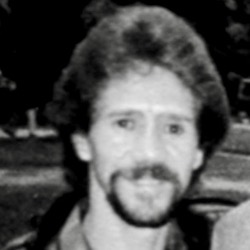 Jorge de los Santos (Photo: Centurion Ministries) Sentenced to life in prison in 1975 for the murder of a Newark, New Jersey, auto dealer, Jorge de los Santos’s conviction was overturned nearly eight years later on the grounds that the prosecutor’s office had improperly suppressed information about the star witness’s background as a police informant and that his testimony “reeked of perjury.” Robert Thomas was shot at his dealership in January 1975 and died a month later. In February 1975, Pasquale Pucillo, referred to by the State as “hardly a fountain of credibility,” told Newark police that he saw 29-year-old de los Santos and Lamont Harvey leaving the dealership immediately after the shooting. Pucillo told the police that he saw the two men from behind and was not sure of their identities. A week later, Pucillo was arrested on drug charges. In a subsequent statement, he positively identified de los Santos and Harvey as the men leaving the crime scene. Charges against Harvey were dropped when it was proven that he was in California at the time of the shooting. The State still felt that it had a case against de los Santos. While awaiting trial in the Essex County Jail, De Los Santos’s cellmate was Richard Delli Santi. They had met each other previously in a home for juvenile offenders. Delli Santi was serving a 60-day jail term for car theft. He had a string of car theft and burglary convictions and was awaiting sentencing for conspiracy to commit arson. Delli Santi had a history of turning state’s witness to avoid jail time. He had been an informant in at least two previous murder cases. In each case, he claimed that the suspect had confessed to the crime. An Essex County prosecutor interviewed Delli Santi. After the interview, Delli Santi wrote to an assistant Essex County prosecutor that he had information incriminating de los Santos in the murder case. It was subsequently determined that de los Santos had shown Delli Santi the pretrial discovery materials relating to his case, and from those materials Delli Santi created the “confession.” The prosecutor later spoke to Delli Santi regarding the letter, and arranged for his release from jail on bail in exchange for his testimony in the murder trial. From his release date through the entirety of the trial, Delli Santi maintained daily contact with the prosecutor. After the one-week trial in Newark Superior Court, and 14 hours of jury deliberation, de los Santos was found guilty of first-degree murder and possession of drugs with intent to distribute. In October 1975, he was sentenced to life in prison. While he was in Trenton State Prison, de los Santos, who was previously illiterate, learned to read and write. In 1980, Jim McCloskey, a seminary student visiting the prison, met de los Santos. They began a dialogue. de los Santos, a former heroin addict, admitted to McCloskey that he had earned heroin by making deliveries for small-time dealers. He also told McCloskey that he was innocent of Thomas’s murder. Convinced that de los Santos was telling the truth about his innocence, McCloskey began to investigate his case. He took a one-year leave of absence from the seminary to obtain evidence. He found Delli Santi (who was in the Bronx House of Detention in New York City being held on a burglary charge) and discovered that he had been an informant for the Newark Police Department and the Essex County Prosecutor’s Office, cooperating in car theft, arson and drug cases in exchange for lenient sentences. McCloskey was able to put together proof that evidence had been suppressed in the de los Santos case. The jury was never told that Delli Santi had testified in at least two earlier murder cases or that he was a state’s witness in an arson case, as well as testifying in de los Santos’s case. McCloskey raised money for de los Santos’s defense and hired an attorney, and in May 1982, de los Santos’s attorney, Paul Casteleiro, filed a petition for writ of habeas corpus. Judge Frederick Lacey of the U.S. District Court for the District of New Jersey ordered that an evidentiary hearing be held. In July 1983, Judge Lacey vacated the 1975 conviction on the grounds that the Essex County Prosecutor’s Office had improperly suppressed information about Delli Santi’s background as a police informant. Delli Santi had lied in testifying at the Miranda hearing. Judge Lacey said the testimony that convicted De Los Santos “reeked of perjury” and that if the jury had received all the evidence, it was unlikely that de los Santos would have been convicted. “It is almost a virtual certainty that there would have been an acquittal here if the jury had had all the evidence that, little by little, has been made available over the years by the State to de los Santos.” On July 27, 1983, de los Santos was released from Trenton State Prison on $10,000 bond. Less than three months later, the State decided against retrying de los Santos and dismissed the charges against him. Following his work with de los Santos, Jim McCloskey founded Centurion Ministries, an organization dedicated to helping the wrongly convicted. - Nina H. Taylor
|